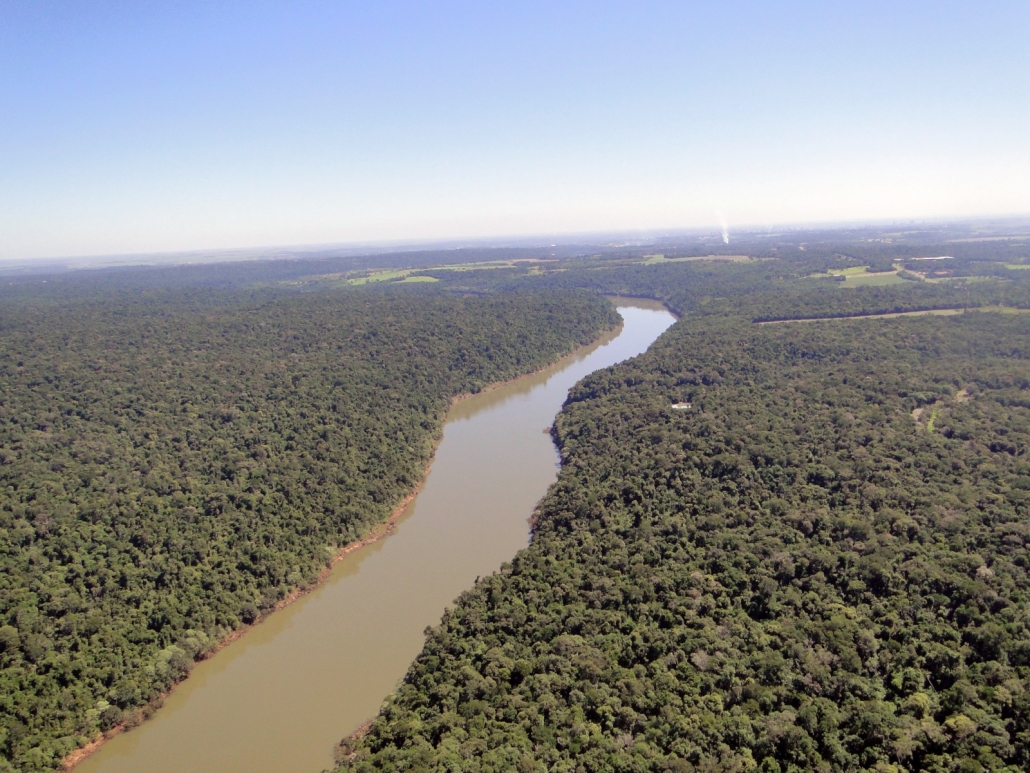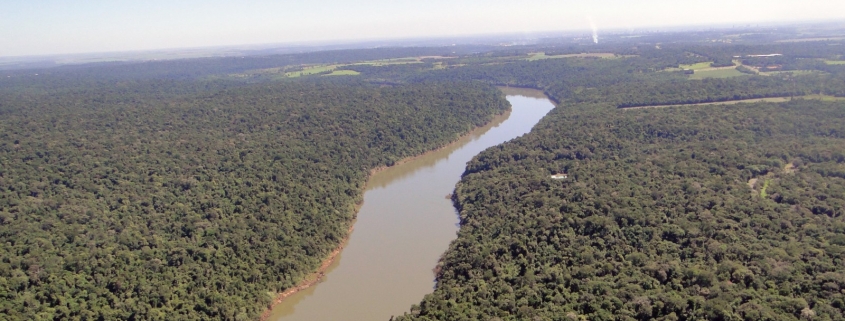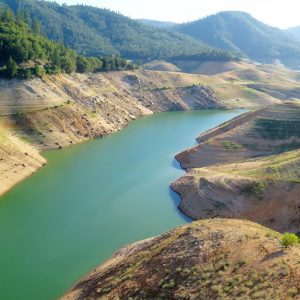HotSpots H2O: Argentina’s Paraná River Drops to 77-Year Low, Resulting in Economic Loss and Wildfires

Paraná River © Rodrigo Soldon / Flickr Creative Commons
By Christian Thorsberg, Circle of Blue
The Paraná River stretches through the heart of central South America, arising in Brazil and extending over 3,000 miles through Paraguay and Argentina. The continent’s second-longest river behind the Amazon, the Paraná is a workhorse, supporting rainforest diversity, Indigenous ancestral homes, and Argentina’s economy: over 80 percent of the country’s farm exports, primarily wheat and soy, are transported via the waterway.
But today the Paraná’s water level is the lowest since 1944, the result of a prolonged drought upriver, in southern Brazil. “We are suffering the effects of a drought that began in June 2019. It is a cycle that has not ended, and it is not clear when it will,” Argentina’s National Weather Service told Reuters.
The eye-test alone tells a consequential story: scattered boats, stuck askew and half-sunken in soggy soil, sit abandoned along shored-up meanders; the green lushness of the delta’s marshes, lagoons, and occasional islands have faded. Last year, NASA satellites captured jarring aerial views of the basin, demonstrating the river’s drastic thinning.
Reverberations of the river’s distress are shellacking the environment and economies alike. Along the Paraguayan border, where the Yacyretá and Itaipu dams have made Paraguay into one of the world’s most substantial exporters of hydroelectric power, crucial energy losses have disrupted the small country’s vulnerable economy. And on local levels, throughout the region’s small and biodiverse communities, the lack of water is threatening fish populations–such as the surubí and sábalo–and the area’s abundance of rare birds, which has famously elevated the river delta into an ornithologist’s playground.
When water levels are at historic norms, the Paraná’s transnational interconnectivity makes it an essential hub. Via the northern watershed, São Paulo is allowed direct access to Argentina’s urban centers of Rosario, Santa Fe, and Buenos Aires. These major port cities share agro-industrial lanes of transport that lead to the ocean, a key supply chain for global exports of soy, corn, and wheat. Amidst the drought, ships travelling on the Paraná have been forced to reduce their cargo by 25 percent, with larger cuts looming. In July, the Argentine government announced a $10.4 million relief fund to offset these economic losses.
Government officials have advised citizens to “save water,” and capture rain for home and commercial use. Within these dry conditions, officials are also urging people to stop burning waste or igniting fires to provide pasture. As the Paraná shrinks, thousands of wildfires have raged in the last two years, lighting skies with an eerie orange hue visible from rural farmlands as well as urban luxury apartments.
“First, without proper humidity the dead grass becomes highly flammable, and second, the low level of the river dries out the canals that usually act as buffers that stop the fire from expanding beyond individual islands,” Laura Prol, an ecologist from the Rosario-based environmental NGO Taller Ecologista, told The Guardian.
Christian Thorsberg is an environmental writer from Chicago. He is passionate about climate and cultural phenomena that often appear slow or invisible, and he examines these themes in his journalism, poetry, and fiction.






Leave a Reply
Want to join the discussion?Feel free to contribute!